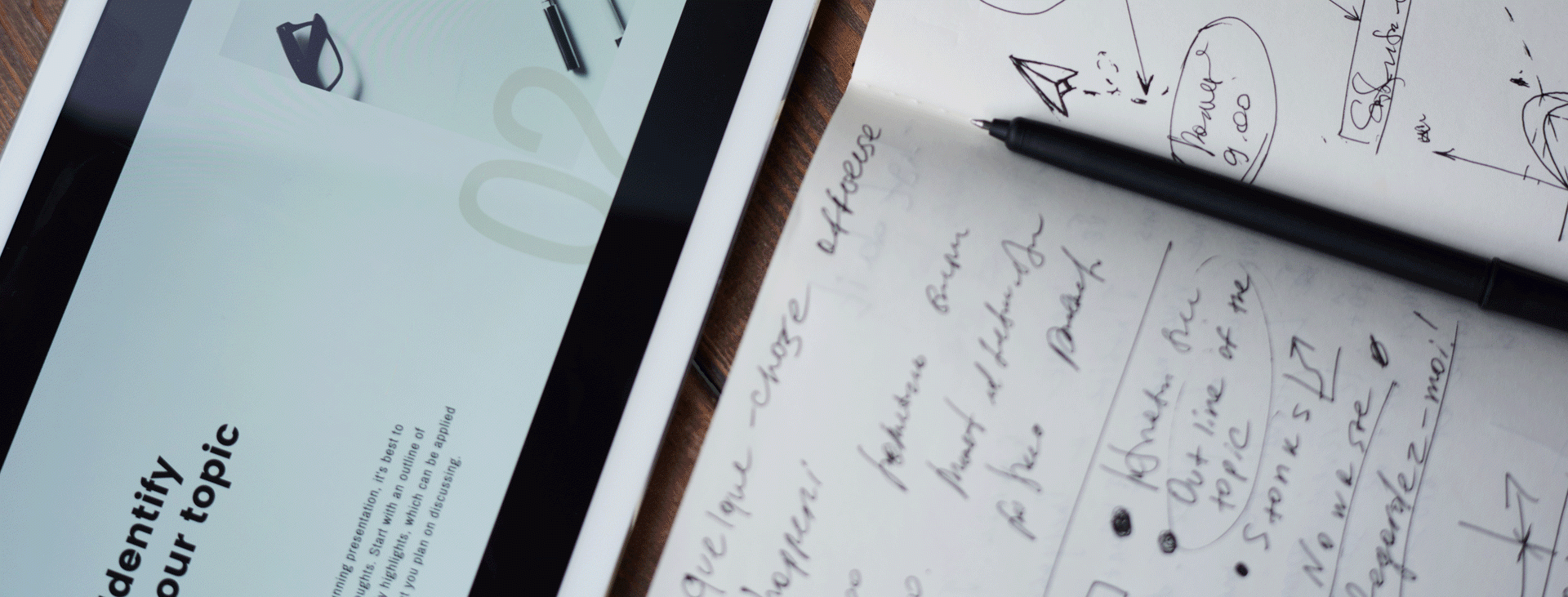1. Preview & Review
|
- Reading course material (or previewing main topics in readings) before class lessens the demand on your brain to process information during lecture as you will have some familiarity or understanding of the topic.
- Review your notes 1-2 days after lecture to consolidate information.
- Create summaries or list questions to help you think critically about the topic. The repetition of reviewing will help you remember the information.
- Regular review (10-20 min a few times a week) of notes has been proven to lead to long-term retention and recall. It also reduces your study time for tests and examinations.
|
2. Take Your Own Notes
|
- Receiving peer notes or recording a lecture is often an essential accommodation for students and can be very helpful in gathering missing information in your own notes.
- When receiving notes from your peers, is possible, it is still valuable to practice the skill of note taking as this process helps with retention, knowledge integration and comprehension.
- If you miss a portion of the class, make note of when you “check out” and “check in” to lecture so that you can easily look for the missing information in your peer notes.
|
3. Organize & Label Your Notes
|
- Labelling your notes (lecture number/title, topics, dates, and page numbers) may seem trivial and unnecessary, but this will help you easily identify your notes later on.
- For handwritten notes, you can have separate notebooks and/or binders with each page labelled.
- Digital notes can be organized into different folders with file names for your lecture topics. This step will help tremendously when you are reviewing your notes later for assignments and exams.
- Note: If it takes more than twenty seconds to locate a particular topic or session, then you will likely benefit from including this information in your notes.
|
4. Focus on Main Ideas
|
- It’s not important to record everything that the professor is saying exactly how they say it unless they are describing terminology, formulae, and specific facts.
- What is important? Lists, names, dates, locations, characteristics, results, purposes, criticisms, contrasts, similarities and summaries.
- Instructor cues (both verbal and non-verbal) such as pausing, voice emphasis, recording on blackboard, and repetition are all indicators of important information. Remember, every professor has their own style and variation will exist from one professor to the next.
|
5. Be Brief
|
- Use point form and abbreviations instead of sentence format. Using point form lowers the demand on your working memory by focusing on capturing the main idea rather than every detail.
- Rather than capturing every detail verbatim, your notes should include just enough details to help you understand the main ideas/concepts. This will look different for everyone, as everyone has a different level of familiarity with and therefore a different understanding of different topics.
- Use of abbreviations and shorthand also reduces the amount of time you spend writing repetitive words such as “and” = & or “with” = w, but only use abbreviations that you understand. Remember to be complete in your point form notes too.
|
6. Use Your Own Words
|
- The process of using your own words actively involves your thinking processes about the material by linking new information to old information that you already possess. It also allows for increased opportunities for memory retention and content understanding.
|
7. Format to Understand & Remember Concepts
|
- Format your notes using different colours, highlighting, bullets, underlines, double spacing and indentations. Using such formatting strategies will mostly appeal to visual learners but also keeps information organized.
- Note: the attention that you place upon formatting should not exceed the attention that you place on learning content and recording meaningful notes.
|
8. Leave Space
|
- Leaving space in your notes allows you to add information at a later date that you may have missed during the lecture. Without these spaces, information gets confusing.
|
